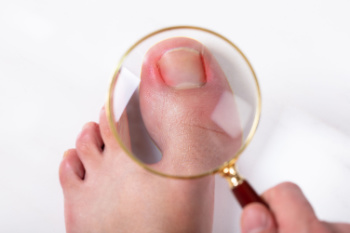
Toenail pain can have many causes, and identifying the source is important for effective relief. One of the most frequent culprits is an ingrown toenail, where the nail digs into the skin and creates irritation or infection. Trauma, such as stubbing your toe or wearing shoes that are too tight, can also lead to pain, discoloration, or even nail loss. Fungal infections may cause the nail to become thick, brittle, or crumbly, often with discomfort or sensitivity. Less commonly, underlying conditions such as arthritis or nerve issues can cause pressure or burning around the toenails. Home remedies may provide temporary relief, but persistent pain should not be ignored. Ignoring the problem can lead to worsening symptoms or permanent nail damage. If you experience ongoing or unexplained toenail pain, it is suggested that you see a podiatrist for a diagnosis and appropriate treatment.
Ingrown toenails may initially present themselves as a minor discomfort, but they may progress into an infection in the skin without proper treatment. For more information about ingrown toenails, contact one of our podiatrists of McKinney Podiatric Associates, PA. Our doctors can provide the care you need to keep you pain-free and on your feet.
Ingrown Toenails
Ingrown toenails are caused when the corner or side of a toenail grows into the soft flesh surrounding it. They often result in redness, swelling, pain, and in some cases, infection. This condition typically affects the big toe and may recur if it is not treated properly.
Causes
You are more likely to develop an ingrown toenail if you are obese, have diabetes, arthritis, or have any fungal infection in your nails. Additionally, people who have foot or toe deformities are at a higher risk of developing an ingrown toenail.
Symptoms
Some symptoms of ingrown toenails are redness, swelling, and pain. In rare cases, there may be a yellowish drainage coming from the nail.
Treatment
Ignoring an ingrown toenail can have serious complications. Infections of the nail border can progress to a deeper soft-tissue infection, which can then turn into a bone infection. You should always speak with your podiatrist if you suspect you have an ingrown toenail, especially if you have diabetes or poor circulation.
If you have any questions, please feel free to contact one of our offices located in Pasadena, Baytown, League City, Houston, and Pearland,TX . We offer the newest diagnostic and treatment technologies for all your foot care needs.
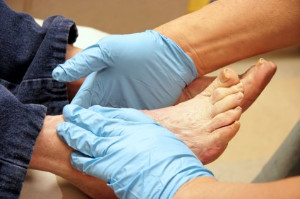
Charcot foot is a rare but serious condition that can affect people with diabetes and nerve damage. It occurs when the bones in the foot weaken and begin to fracture or dislocate without causing much pain. As the condition progresses, the foot may change shape, often becoming swollen, warm, and visibly deformed. Without treatment, continued walking on the affected foot can lead to severe damage, ulcers, and even risk of limb loss. Early signs are often mistaken for a simple sprain or infection, so prompt evaluation is essential. Treatment usually involves immobilization with a cast or boot to allow the bones to heal, followed by wearing custom footwear to prevent recurrence. In advanced cases, surgery may be needed to correct deformities. If you have diabetes and notice sudden swelling, redness, or warmth in your foot, it is suggested you see a podiatrist for a diagnosis and appropriate treatment.
Diabetic foot care is important in preventing foot ailments such as ulcers. If you are suffering from diabetes or have any other concerns about your feet, contact one of our podiatrists from McKinney Podiatric Associates, PA. Our doctors can provide the care you need to keep you pain-free and on your feet.
Diabetic Foot Care
Diabetes affects millions of people every year. The condition can damage blood vessels in many parts of the body, especially the feet. Because of this, taking care of your feet is essential if you have diabetes, and having a podiatrist help monitor your foot health is highly recommended.
The Importance of Caring for Your Feet
Patients with diabetes should have their doctor monitor their blood levels, as blood sugar levels play such a huge role in diabetic care. Monitoring these levels on a regular basis is highly advised.
It is always best to inform your healthcare professional of any concerns you may have regarding your feet, especially for diabetic patients. Early treatment and routine foot examinations are keys to maintaining proper health, especially because severe complications can arise if proper treatment is not applied.
If you have any questions please feel free to contact one of our offices located in Pasadena, Baytown, League City, Houston, and Pearland,TX . We offer the newest diagnostic and treatment technologies for all your foot and ankle needs.
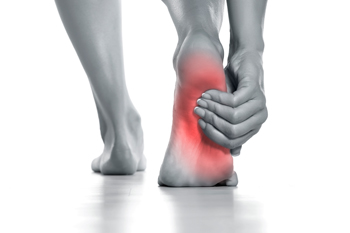
Pain in the bottom of the foot, especially sharp pain or a burning sensation, can be caused by several conditions. One common cause is plantar fasciitis, where the tissue along the bottom of the foot becomes inflamed, often leading to sharp pain near the heel. Another potential cause is neuropathy, a condition where nerve damage causes a burning or tingling sensation. Metatarsalgia or inflammation of the ball of the foot can also lead to discomfort, often described as a feeling of standing on a small stone. Symptoms typically include sharp or burning pain in the foot's arch or heel, especially after standing or walking for long periods. The area may feel tender, swollen, or tight. A podiatrist can help diagnose the underlying cause through physical exams, imaging tests, or nerve function tests. Treatment may include rest, stretching exercises, custom orthotics or anti-inflammatory medications. If you are dealing with foot pain, it is suggested that you make an appointment with a podiatrist for care.
Foot Pain
Foot pain can be extremely painful and debilitating. If you have a foot pain, consult with one of our podiatrists from McKinney Podiatric Associates, PA. Our doctors will assess your condition and provide you with quality foot and ankle treatment.
Causes
Foot pain is a very broad condition that could be caused by one or more ailments. The most common include:
Diagnosis
To figure out the cause of foot pain, podiatrists utilize several different methods. This can range from simple visual inspections and sensation tests to X-rays and MRI scans. Prior medical history, family medical history, and any recent physical traumatic events will all be taken into consideration for a proper diagnosis.
Treatment
Treatment depends upon the cause of the foot pain. Whether it is resting, staying off the foot, or having surgery; podiatrists have a number of treatment options available for foot pain.
If you have any questions, please feel free to contact one of our offices located in Pasadena, Baytown, League City, Houston, and Pearland,TX . We offer the newest diagnostic and treatment technologies for all your foot care needs.
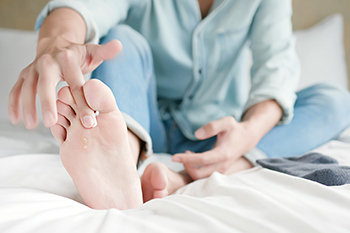
Athlete’s foot is a fungal infection that causes itching, redness, and peeling, usually between the toes or on the soles. Most cases respond well to mild antifungal creams, sprays, or powders. However, if symptoms continue for weeks or return often, the infection may be more serious or resistant to treatment. In some cases, what looks like athlete’s foot may be another condition, such as eczema or psoriasis, and needs a different approach. Poor foot hygiene, wearing tight shoes, and damp environments can also make healing harder. A podiatrist can confirm the diagnosis through a simple test and may prescribe stronger medications or check for other skin problems. Early attention can prevent the infection from spreading or becoming chronic. If you have athlete’s foot that does not improve, it is suggested that you see a podiatrist for a proper diagnosis and appropriate treatment.
Athlete’s Foot
Athlete’s foot is often an uncomfortable condition to experience. Thankfully, podiatrists specialize in treating athlete’s foot and offer the best treatment options. If you have any questions about athlete’s foot, consult with one of our podiatrists from McKinney Podiatric Associates, PA. Our doctors will assess your condition and provide you with quality treatment.
What Is Athlete’s Foot?
Tinea pedis, more commonly known as athlete’s foot, is a non-serious and common fungal infection of the foot. Athlete’s foot is contagious and can be contracted by touching someone who has it or infected surfaces. The most common places contaminated by it are public showers, locker rooms, and swimming pools. Once contracted, it grows on feet that are left inside moist, dark, and warm shoes and socks.
Prevention
The most effective ways to prevent athlete’s foot include:
Symptoms
Athlete’s foot initially occurs as a rash between the toes. However, if left undiagnosed, it can spread to the sides and bottom of the feet, toenails, and if touched by hand, the hands themselves. Symptoms include:
Diagnosis and Treatment
Diagnosis is quick and easy. Skin samples will be taken and either viewed under a microscope or sent to a lab for testing. Sometimes, a podiatrist can diagnose it based on simply looking at it. Once confirmed, treatment options include oral and topical antifungal medications.
If you have any questions, please feel free to contact one of our offices located in Pasadena, Baytown, League City, Houston, and Pearland,TX . We offer the newest diagnostic and treatment technologies for all your foot care needs.
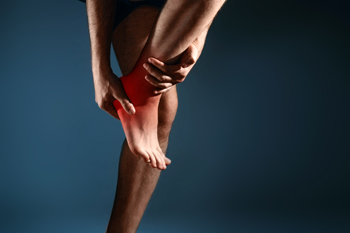
Heel pain is a frequent complaint that can interfere with daily life, whether it starts suddenly or develops over time. Injuries and disorders affecting the heel include plantar fasciitis, Achilles tendonitis, heel spurs, and bursitis. These conditions often result from repetitive stress, poor footwear, or biomechanical issues such as flat feet or high arches. Some individuals may experience sharp pain with the first steps in the morning, while others notice discomfort after long periods of standing or activity. Ignoring heel pain may lead to worsening symptoms and further injury. Treatment often includes rest, wearing supportive shoes, stretching exercises, and, in some cases, custom orthotics. If you are experiencing persistent heel pain or discomfort that is limiting your mobility, it is suggested that you see a podiatrist for a proper diagnosis and treatment to restore comfort and function.
Many people suffer from bouts of heel pain. For more information, contact one of our podiatrists of McKinney Podiatric Associates, PA. Our doctors can provide the care you need to keep you pain-free and on your feet.
Causes of Heel Pain
Heel pain is often associated with plantar fasciitis. The plantar fascia is a band of tissues that extends along the bottom of the foot. A rip or tear in this ligament can cause inflammation of the tissue.
Achilles tendonitis is another cause of heel pain. Inflammation of the Achilles tendon will cause pain from fractures and muscle tearing. Lack of flexibility is also another symptom.
Heel spurs are another cause of pain. When the tissues of the plantar fascia undergo a great deal of stress, it can lead to ligament separation from the heel bone, causing heel spurs.
Why Might Heel Pain Occur?
Treatments
Heel pain should be treated as soon as possible for immediate results. Keeping your feet in a stress-free environment will help. If you suffer from Achilles tendonitis or plantar fasciitis, applying ice will reduce the swelling. Stretching before an exercise like running will help the muscles. Using all these tips will help make heel pain a condition of the past.
If you have any questions please contact one of our offices located in Pasadena, Baytown, League City, Houston, and Pearland,TX . We offer the newest diagnostic and treatment technologies for all your foot and ankle needs.

Ankle arthroplasty, also known as total ankle replacement, is a surgical procedure that replaces a damaged ankle joint with an artificial implant. This procedure is an effective treatment option for individuals with severe arthritis or complete cartilage loss, providing a long-term solution when conservative treatments are no longer effective. One of the main benefits is instant pain relief, as the damaged joint is replaced with a smooth and functional implant. Unlike ankle fusion, which can alter gait and cause a limp, ankle arthroplasty preserves natural movement and flexibility. A fixed implant can also improve stability, reducing the risk of falls and further injury. If you have chronic ankle pain or a severe ankle condition, it is suggested that you visit a podiatrist who can discuss whether ankle surgery is right for you.
Foot surgery is sometimes necessary to treat a foot ailment. To learn more, contact one of our podiatrists of McKinney Podiatric Associates, PA. Our doctors will assist you with all of your foot and ankle needs.
When Is Surgery Necessary?
Foot and ankle surgery is generally reserved for cases in which less invasive, conservative procedures have failed to alleviate the problem. Some of the cases in which surgery may be necessary include:
What Types of Surgery Are There?
The type of surgery you receive will depend on the nature of the problem you have. Some of the possible surgeries include:
Benefits of Surgery
Although surgery is usually a last resort, it can provide more complete pain relief compared to non-surgical methods and may allow you to finally resume full activity.
Surgical techniques have also become increasingly sophisticated. Techniques like endoscopic surgery allow for smaller incisions and faster recovery times.
If you have any questions please feel free to contact one of our offices located in Pasadena, Baytown, League City, Houston, and Pearland,TX . We offer the newest diagnostic and treatment technologies for all your foot and ankle needs.
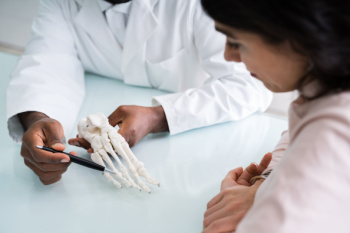
When it comes to foot and ankle health, personalized care makes all the difference. Every patient has unique needs based on their lifestyle, activity level, and medical history. A podiatrist who offers individualized care can create a treatment plan tailored specifically to you. This means better results, faster relief from pain, and a lower risk of future problems. Personalized care starts with listening. A podiatrist takes time to understand your concerns, whether you are dealing with heel pain, bunions, arthritis, or diabetic foot issues. They assess your foot structure, gait, and any underlying conditions before recommending treatment. These might include custom orthotics, footwear guidance, targeted exercises, or minimally invasive procedures. With customized treatment, patients often experience greater comfort and improved mobility. If you are having foot or ankle problems, it is suggested that you seek care from a podiatrist for a proper diagnosis and treatment appropriate to your needs.
If you are experiencing pain in the feet or ankles, don’t join the stubborn majority refusing treatment. Feel free to contact one of our podiatrists from McKinney Podiatric Associates, PA. Our doctors can provide the care you need to keep you pain-free and on your feet.
What Is a Podiatrist?
Someone would seek the care of a podiatrist if they have suffered a foot injury or have common foot ailments such as heal spurs, bunions, arch problems, deformities, ingrown toenails, corns, foot and ankle problems, etc.
Podiatric Treatment
A podiatrist will treat the problematic areas of the feet, ankle or lower leg by prescribing the following:
A common podiatric procedure a podiatrist will use is a scanner or force plate which will allow the podiatrist to know the designs of orthotics. Patients are then told to follow a series of tasks to complete the treatment. The computer will scan the foot a see which areas show weight distribution and pressure points. The podiatrist will read the analysis and then determine which treatment plans are available.
If you have any questions please feel free to contact one of our offices located in Pasadena, Baytown, League City, Houston, and Pearland,TX . We offer the newest diagnostic and treatment technologies for all your foot and ankle needs.
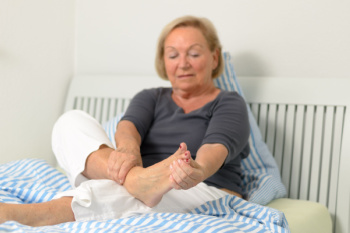
Although gout is often associated with men, it also affects women, particularly after menopause. Estrogen helps regulate uric acid levels, so its decline increases the risk of developing gout. The condition occurs when uric acid builds up in the bloodstream, forming painful crystals in the joints, including in the big toe. Risk factors include a diet high in purines, obesity, kidney disease, and certain medications that affect uric acid levels. Women with gout often experience symptoms in the toes, ankles, and knees, leading to swelling, redness, and severe pain. If left untreated, gout can cause joint damage and chronic pain, affecting mobility and quality of life. If you have pain in your big toe, it is suggested that you are under the care of a podiatrist who can provide an accurate diagnosis and treatment.
Gout is a painful condition that can be treated. If you are seeking treatment, contact one of our podiatrists from McKinney Podiatric Associates, PA. Our doctors will treat your foot and ankle needs.
What Is Gout?
Gout is a form of arthritis that is characterized by sudden, severe attacks of pain, redness, and tenderness in the joints. The condition usually affects the joint at the base of the big toe. A gout attack can occur at any random time, such as the middle of the night while you are asleep.
Symptoms
Risk Factors
Prior to visiting your podiatrist to receive treatment for gout, there are a few things you should do beforehand. If you have gout you should write down your symptoms--including when they started and how often you experience them, important medical information you may have, and any questions you may have. Writing down these three things will help your podiatrist in assessing your specific situation so that he or she may provide the best route of treatment for you.
If you have any questions, please feel free to contact one of our offices located in Pasadena, Baytown, League City, Houston, and Pearland,TX . We offer the newest diagnostic and treatment technologies for all your foot care needs.